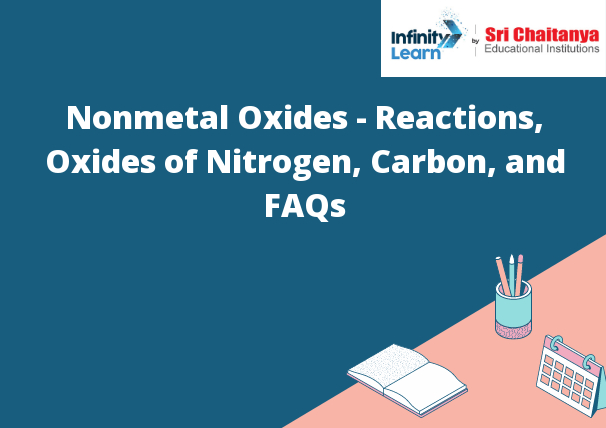Table of Contents
What are Nonmetal Oxides?
Nonmetal oxides are compounds that result from the reaction of a nonmetal and oxygen. They are usually colorless, although some can be slightly colored. Nonmetal oxides are usually solid, but some can be liquids or gases.

Reactions of Nonmetal Oxides
Nonmetal oxides react with water to form acids and bases. For example, carbon dioxide reacts with water to form carbonic acid.
Oxides of Nitrogen
Nitrogen oxides are a family of pollutants that includes nitric oxide (NO) and nitrogen dioxide (NO2). Both gases are emitted from cars, trucks, power plants, and other sources.
Nitric oxide is a colorless, odorless gas. It is emitted from cars and trucks when the engines are started and when the brakes are applied. Nitric oxide can also form in the atmosphere when nitrogen and oxygen interact.
Nitrogen dioxide is a brownish gas with a sharp, biting odor. It is a major component of smog. Nitrogen dioxide is formed when nitric oxide reacts with oxygen in the air.
Oxides of Phosphorus
Oxides of phosphorus are a group of inorganic compounds containing phosphorus and oxygen. The most common oxide is phosphorus pentoxide, P2O5. These compounds are generally colorless or white solids that are very reactive.
Oxides of Carbon
In general, an oxide of carbon is a compound that contains carbon and oxygen. There are many different types of oxides of carbon, and they can be classified in a number of ways.
One way to classify oxides of carbon is by their structure. The three most common structures are:
1) CO (carbon monoxide)
2) CO 2 (carbon dioxide)
3) C x O y (carbon monoxide)
Another way to classify oxides of carbon is by their reactivity. The most reactive oxides of carbon are carbon monoxide and carbon dioxide. These oxides are very unstable and tend to react with other substances very quickly. The less reactive oxides of carbon are those that have a higher carbon to oxygen ratio, such as carbon monoxide.
Carbon Monoxide
Alarm
A carbon monoxide alarm is a device that detects carbon monoxide (CO) levels in a home. Carbon monoxide is a colorless, odorless gas that can be deadly if inhaled in high levels.
Many carbon monoxide alarms are also able to detect levels of other gases such as propane and natural gas.
Carbon monoxide alarms should be installed in every home, especially if there are sources of carbon monoxide such as fuel-burning appliances.
Carbon Dioxide
Emissions
The United States emitted 5,195 million metric tons of carbon dioxide in 2009. This was the second highest amount of emissions in the world, behind China. The United States accounted for 16.9% of global carbon dioxide emissions.
How to Prepare Notes on Non-Metal Oxides?
Non-metal oxides are compounds that do not contain metal atoms. In order to prepare notes on non-metal oxides, one must first understand the basic structure of an oxide. An oxide is a compound that contains at least one oxygen atom and one other atom. The other atom can be a metal or a non-metal. Non-metal oxides are usually written using the formula MXO, where M is the other atom and X is oxygen. Notes on non-metal oxides should include the properties of the compound, as well as the structure.
How Does Infinity Learn Prepare Students for a Chemistry Test on Metal Oxides ?
One way that Infinity Learning prepares students for a chemistry test on metal oxides is by providing a study guide that outlines the different types of metal oxides, their properties, and how to identify them. The study guide also includes practice questions to help students test their understanding of the material.








